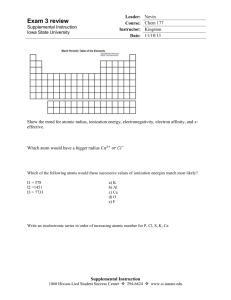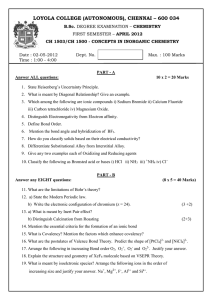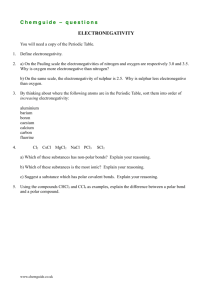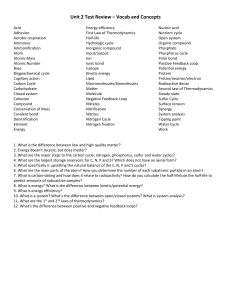ch 1500 - inorganic chemistry
advertisement
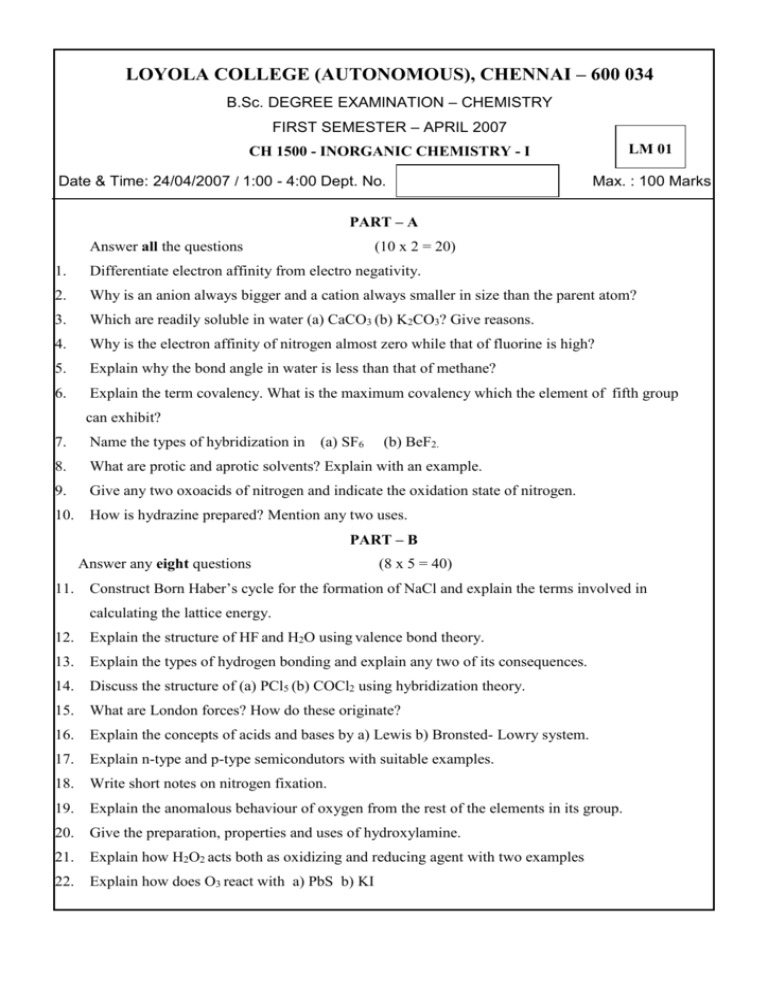
LOYOLA COLLEGE (AUTONOMOUS), CHENNAI – 600 034 B.Sc. DEGREE EXAMINATION – CHEMISTRY FIRST SEMESTER – APRIL 2007 LM 01 CH 1500 - INORGANIC CHEMISTRY - I Date & Time: 24/04/2007 / 1:00 - 4:00 Dept. No. Max. : 100 Marks PART – A Answer all the questions (10 x 2 = 20) 1. Differentiate electron affinity from electro negativity. 2. Why is an anion always bigger and a cation always smaller in size than the parent atom? 3. Which are readily soluble in water (a) CaCO3 (b) K2CO3? Give reasons. 4. Why is the electron affinity of nitrogen almost zero while that of fluorine is high? 5. Explain why the bond angle in water is less than that of methane? 6. Explain the term covalency. What is the maximum covalency which the element of fifth group can exhibit? 7. Name the types of hybridization in (a) SF6 (b) BeF2. 8. What are protic and aprotic solvents? Explain with an example. 9. Give any two oxoacids of nitrogen and indicate the oxidation state of nitrogen. 10. How is hydrazine prepared? Mention any two uses. PART – B Answer any eight questions 11. (8 x 5 = 40) Construct Born Haber’s cycle for the formation of NaCl and explain the terms involved in calculating the lattice energy. 12. Explain the structure of HF and H2O using valence bond theory. 13. Explain the types of hydrogen bonding and explain any two of its consequences. 14. Discuss the structure of (a) PCl5 (b) COCl2 using hybridization theory. 15. What are London forces? How do these originate? 16. Explain the concepts of acids and bases by a) Lewis b) Bronsted- Lowry system. 17. Explain n-type and p-type semicondutors with suitable examples. 18. Write short notes on nitrogen fixation. 19. Explain the anomalous behaviour of oxygen from the rest of the elements in its group. 20. Give the preparation, properties and uses of hydroxylamine. 21. Explain how H2O2 acts both as oxidizing and reducing agent with two examples 22. Explain how does O3 react with a) PbS b) KI PART – C Answer any four questions 23. (4 x 10 = 40) (a) Define electronegativity. How is it determined by different scales of electronegativity? Explain with examples the factors affecting it. 24. (2+ 5+3) Construct a qualitative MO energy level diagram for N2 molecule. Write the MO electronic configuration, bond order and predict the magnetic nature. 25. Explain the postulates of VSEPR theory and explain the structure of a) ClF3 26. b) ICl4- Write short notes on: (4+3+3) a) leveling effect of solvent b) symbiosis c) precipitation reaction in liq. ammonia. 27. Write short notes on hydrides and halides of sulphur. 28. Explain the classification of oxides and their properties. *************** (4+3+3)
